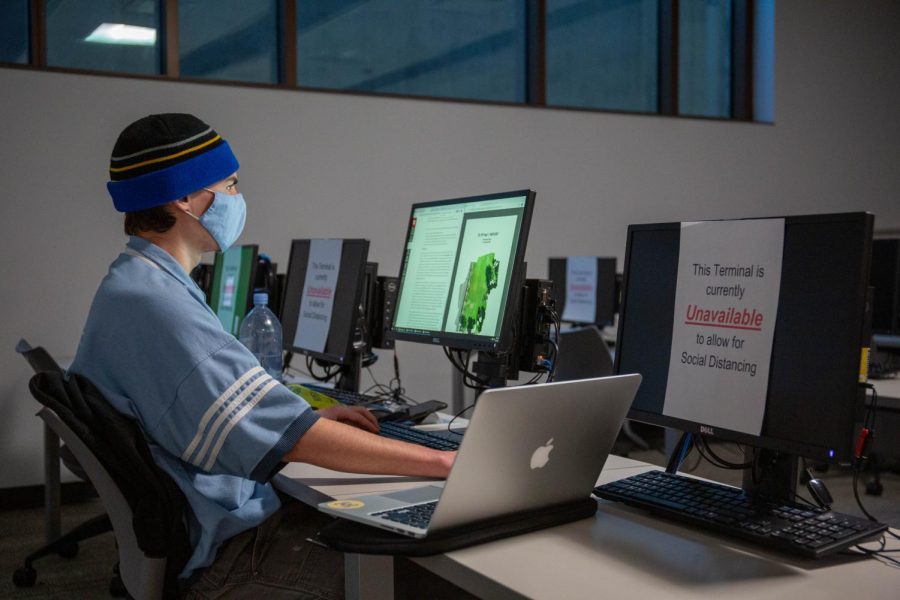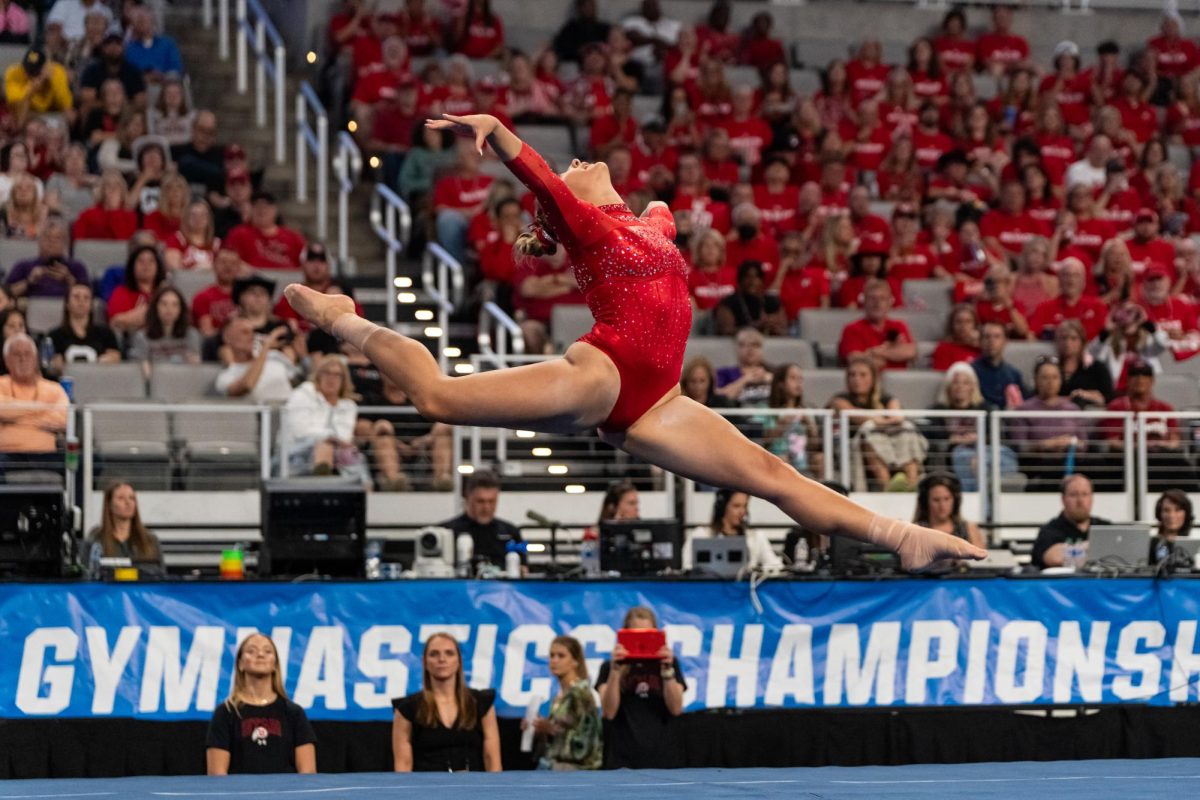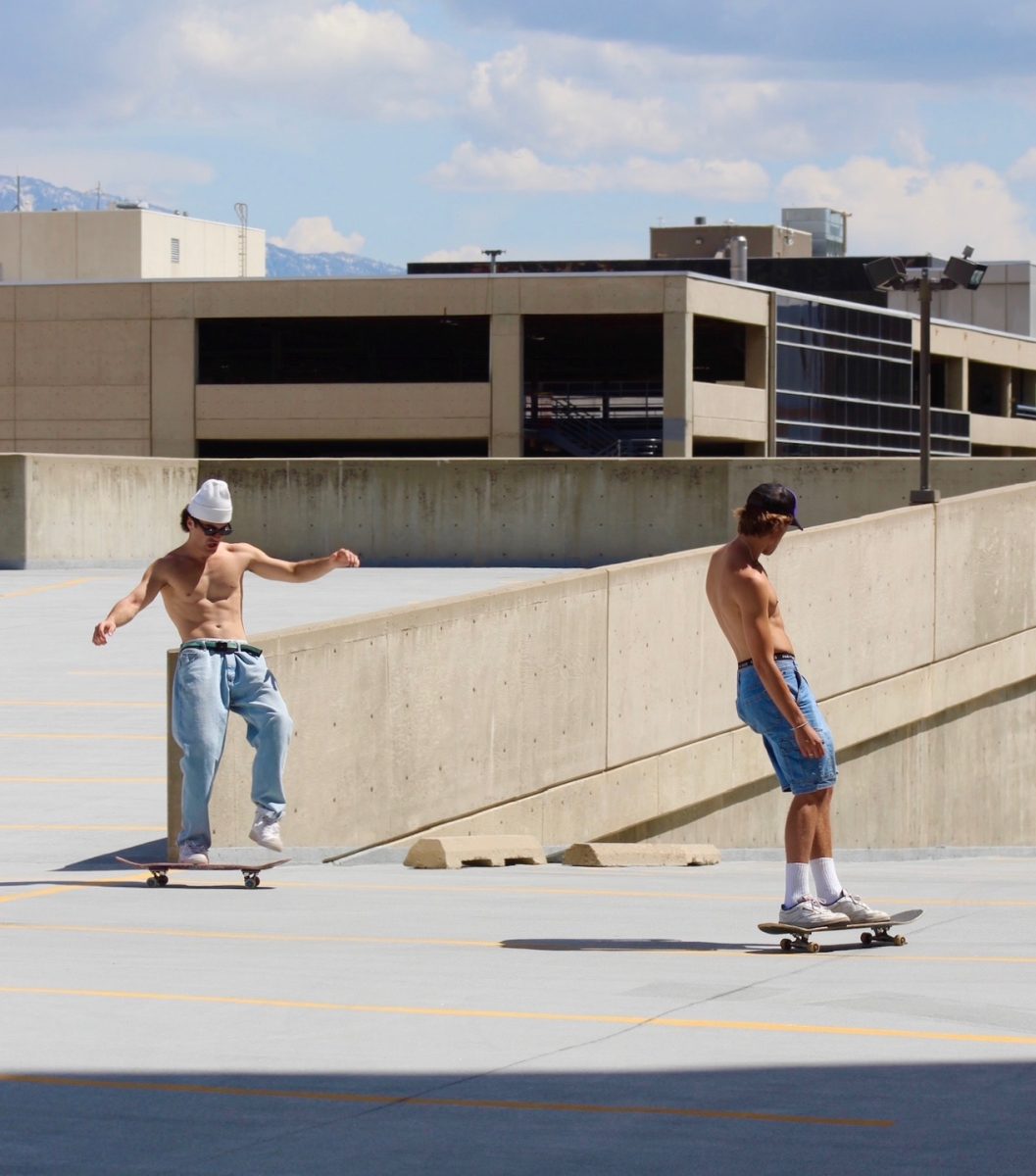Poma: Why I’m Cautiously Optimistic about Post-Pandemic Education
Fourth-year student, Thomas Stone, works on a GIS project at a computer lab in Gardener Commons on October 30, 2020. (Photo by Gwen Christopherson | The Daily Utah Chronicle)
March 24, 2021
As we hit the one-year mark of schools moving classes online, all of us feel Zoom-fatigued. Students of all ages want to return to the pre-pandemic way of learning, especially now that more Utahns are getting vaccinated and COVID-19 cases are significantly lower than they were this winter. While we can start thinking about what school might look like in the coming semesters, we should remain cautiously optimistic rather than expect to remove all restrictions — and we should keep in mind that our learning environments have probably changed forever.
Most Utah schools and colleges have resumed some form of in-person instruction. Many elementary and high schools have adopted systems where groups of students switch between in-person and online instruction every other day. Colleges have even more options, with some classes remaining completely online, others going hybrid and some meeting in-person with social distancing and masks.
With the advent of saliva tests, academic institutions have also encouraged students, faculty and staff to test regularly for COVID-19, which have likely helped prevent outbreaks. Large school events and gatherings are still restricted, a measure that has slowed the potential spread of returning to in-person classes. Group activities like sports have been monitored to keep numbers relatively low — not without hiccups, of course, but some form of safety is better than nothing.
All these procedures have been in place since last spring. Given that we’ve been in this setting for so long, most people have gotten used to learning in these restricted environments. In fact, University of Utah English professor Lindsey Drager said in an interview that these varied options have helped many students. “A lot of [college] students have thrived in the Zoom environment because they don’t have to coordinate the classes that they’re taking with their duties at home with their kids or with their full-time jobs.” It was only this past fall semester that in-person learning crept back into students’ lives, and for good reason. Now, it’s easy to imagine that the worst of the pandemic is behind us and that within the next semester or two, we won’t need any regulations in schools anymore.
Of course, even with safety measures in place, school-wide outbreaks still occurred. Last semester, 92 Utah schools — mostly high schools — reported outbreaks or returned to online learning to prevent one. Colleges are reporting outbreaks even now. Last year’s return-to-campus initiatives make clear that the risk of outbreaks, while lower than last fall, still lingers in 2021.
There are still a lot of unknowns associated with the pandemic, especially for schools. Even though many Utahns get vaccinated every day, we can’t depend on the vaccine to be our “Hail Mary” for the foreseeable future. In Utah, college students will likely have access to the vaccine starting in April, along with other adults — but not everyone will be able to receive it right away. As of this writing, Pfizer and Moderna are testing the effects of their vaccines on children 12 and older, and those findings will not be available until summer. Elementary kids likely won’t be able to be vaccinated for several more months.
The bottom line is that we cannot bank on being completely back to February 2020-style schooling by August. Even if we change back to a completely in-person semester, things might look different than they did before. “I’m concerned about students shifting 100% to in-person in the fall. We don’t have tons of guidance from the U yet about, what an in-person experience means,” Drager said. “Does that mean we’re in class for an hour and 20 minutes twice a week just like before the pandemic? Do we need that full hour and 20 minutes twice a week or are there ways we could meet once a week?” Institutions will need contingency plans for the potential spread of COVID-19 variants and disruptions to vaccines administration among the general public, which could determine the feasibility of an in-person fall semester. Student preferences for remote learning might also prompt adjustments to universities’ course schedules.
With so many uncertainties, schools must continue to encourage healthy practices even with hope on the horizon. We still should wear masks, clean surfaces thoroughly and maintain our distances from people outside our households. And even if the best-case scenario plays out, the teaching and learning practices we picked up while attending school online will likely become more mainstream — with or without the pandemic. One school district in Utah wants to implement more virtual options in the future. There are even talks of online academies opening up, which many parents and students might be interested in even after the pandemic is over.
All in all, we might need to be okay with online learning during 2021 — as much as some of us want things to go back to exactly how they were. For all their faults, online options have opened the door for so much potential and have taught students and instructors alike to be prepared for the unexpected. “Faculty have done so much course revision and course building. When you put that much energy into digital teaching, you want to be able to use all those resources,” Drager said. “We want to make sure that’s still relevant moving forward.”
We can all rejoice over the fact that we survived our first (and hopefully only) full year of Zoom schooling — but we need to keep being mindful of our safety and make peace with the fact that it may be a while before things truly go back to normal. We’ve done it for this long, and we can do it again.












